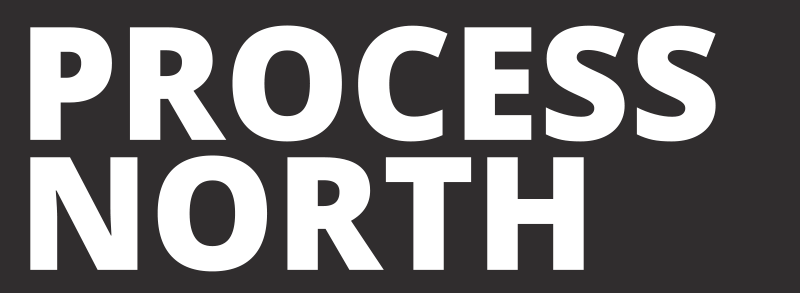Conflict resolution online
Jessica Katz Jameson and Missy F Hannah, editors, Contemporary Trends in Conflict and Communication: Technology and social media, De Gruyter, Berlin, 2022, pp xiii and 228.
Reviewed by Mike Makin-Waite
The first two volumes on ‘emerging trends in conflict management’ suggest that this new book series from De Gruyter will be very worthwhile. The series editor, Helena Desivilya Syna, explains that the first volume addresses an issue which many professionals and activists who wish to positively address community tensions have been increasingly concerned about: ‘the interface of conflict with technology’ and the way that the use of social media often increases ‘polarisation, impeding the capacity of diverse parties to maintain constructive conflict communication’. (The second volume, about ‘bottom-up’ peacebuilding initiatives, is reviewed here).
As the volume editors state, ‘in an era of increased polarisation … people have often shown a lack of willingness and ability to engage in productive dialogue online … social media is often implicated in the promulgation of alternative facts, false news, and intimidation’.
From the beginning, though, the book’s editors Jessica Katz Jameson and Missy F Hannah also identify that digital platforms ‘are potentially capable of promoting communication and advance[ing] co-operation in a variety of family, organisational and community contexts’. They point to the growth of ‘online dispute resolution’, believing that ‘learning how to improve mediated communication’ in online spaces is important and possible, and can help address conflict.
The first chapters of their book looks at examples of how technology has been used ‘to promote dialogue and collaboration’, initially focussing on the techniques used by a range of powerful think tanks (the Brookings Institute, the RAND Corporation and the Heritage Foundation) to engage and influence people as part of promoting their policy agendas, and on how US state agencies ‘harness big data and artificial intelligence (AI) to provide timely intelligence assessments to decision makers’. These organisations can, arguably, be seen as parties to conflicts, rather than organisations working for resolutions which are agreed between a range of parties. Nevertheless, the ways in which state organisations and agencies which influence policy debates choose to use social media is very important in shaping the overall feel of online space – and the ‘IRL’ world which it draws from and impacts on. For this reason, insights into the ‘different routes to persuasion’ used by the think tanks are helpful in explaining how the character of public debate is changing. Daisung Jang, John Bechara and William P Bottom find that RAND and Brookings ‘stress central routes to persuasion rooted in a logical argument’, using ‘insightful, authentic and causal words’, where the intent is to ‘influence through reasoning’. By contrast, ‘Heritage Foundation consistently used more affective terminology, exclamation marks, and certainty’: here, stirring and reinforcing ‘mood, feelings, liking and other affective reactions’ are the preferred route to influence. The authors highlight ‘an asymmetric conflict between research and emotion’ in terms of how evidence is formulated and promoted – and this has consequences for how people make sense of issues and respond. Jang, Bechara and Bottom show how Heritage Foundation connected to and encouraged scepticism about the Black Lives Matter movement, counterposing law enforcement to racial justice and promoting suggestions that ‘a pro-communist China organisation’ was ‘financially supporting the … movement’.
Is it possible for those who want to develop policy and engage people on the basis of calm consideration and deliberative process to be more effective in a world where appeals to negative emotions including resentment, envy, fear, anger and anxiety seem to garner most clicks, likes and follows? Deborah Goldstein’s study of ‘online deliberative dialogue’ through the North Carolina Leadership Forum, which ‘facilitates constructive engagement between … policy, business and non-profit leaders’ suggests that it is possible, at least where people have committed in advance to a process with an agreed format and ground rules.
Candice Edrington’s chapter on the #ShareTheMicNow initiative explores a positive example of how social media was used ‘to promote dialogue and collaboration during a time of heightened awareness of racial injustice’. The initiative, in June 2020, i.e., at the height of Black Lives Matters, involved ‘White women of celebrity stature’ arranging for ‘Black women activists and celebrities to take over their Instagram accounts for a day to discuss their social justice efforts and to share how others could get involved’. Edrington highlights many useful observations from #ShareTheMicNow, covering allyship, white privilege, institutionalised racism, activism and other themes. She states that ‘the collaboration … was a great way to not only create dialogue, but to build community with unlikely participants in hopes of getting them to join the movement’. The approach was taken up and reproduced in a range of US states, and in the UK, Australia, the Netherlands and Italy.
Careful analysis of how people use social media, and their different styles and approaches, can help identify possible issues where more considered communication could be encouraged – or where regulatory interventions could be focussed. For this reason, Malaka Friedman’s chapter on Donald Trump’s use of Twitter, and a chapter by Ioana A Cionea and Amy Janan Johnson about ‘conflict management on Facebook’ are useful: the detailed examination of the experience of conflict on Facebook by a sample of white individuals in the South-Central USA during the latter part of 2020 recognises that ‘online discussions are rife with incivility’, but looks for pointers ‘about how to engage in more constructive exchanges on social media’. Cionea and Johnson describe the way that the participants’ online activity was coded in relation to the different conflict styles which are mapped by the Thomas-Kilmann Conflict Mode Instrument: their chapter would have benefitted greatly from the inclusion of concrete examples, such as quoted exchanges and consideration of specific words, to illustrate the various styles of avoidance, accommodating, compromising etc. (To make space for such examples, it would have been fine to cut some of the signposting in this chapter, as in others: ‘what we are going to say, what we are saying, what we have said’. This practice can be helpful to students, and to Artificial Intelligence – AI – scrapers, but it can be overdone and can sometimes feel ponderous).
Specific examples are included in R Tyler Spradley and Elizabeth Spradley’s useful chapter on how Amtrack responded to YouTube comments on its videos promoting the use of masks on the railways during the COVID-19 pandemic. They detail peoples’ reactions against the company’s policies, and explore such questions as whether it is useful for officials to get involved in ‘disputes that transpire in the comments section’ and whether ‘an official organisational reply to a dispute in YouTube comments’ will ‘amplify the dispute’. Perhaps the key consideration is ‘what is the threshold of resistance commentary that should move organisations to respond?’ Spradley and Spradley conclude with clear ‘best practice’ recommendations on how official organisations can handle the risk of negative reactions to their social media posts, and how they can address conflict if it does occur. These include anticipating conflict; contextualising issues; and issuing messages that ‘de-escalate … as stakeholders escalate conflict’, for example by ‘demonstrating care for the resistant stakeholders and their interests, identity and goals’ and by reframing ‘conflicts by emphasising unity and similarity rather than separation and difference’.
Rachelly Ashwall-Yakar highlights the value of conflict resolution education for school pupils. In many countries, she says, this is combined with ‘Social Emotional Learning’, which promotes ‘skills such as perspective-taking, empathy, decision-making, managing emotions, respecting and accepting diversity’. Most of such education ‘relates mainly to face to face encounters’ and Ashwall-Yakar calls for the development of educational packages which are relevant to and effective for the online space. She shares results from an example (the Agree-Online Educational Programme) which was run with 10- to 14-year-olds in Israel, concluding that ‘we need to provide more widespread online dispute resolution education’.
Other chapters in the third part of the book develop the exploration of how online dispute resolution can be useful in educational settings, both between teachers and students and around ‘freedom of speech’ controversies. Andrea Hartmann-Piraudeau describes how her organisation, the German-based International Mediation Campus, developed online mediation training in a range of forms, with their offer expanding in scale and range during the COVID-19 years. She draws out many useful points for mediation and training organisations (disclosure: this reviewer delivered an online training seminar for the IMC earlier this year, and found it a useful and enjoyable way of sharing information about a particular mediation initiative in Scotland with a range of international participants). John Zelenzikow’s concluding chapter helpfully identifies, classifies and discusses a range of online dispute resolution systems, and points to the potentially positive use of AI in supporting and developing such systems – a subject that is likely to be further discussed and debated in the coming years.
Published July 2023.


